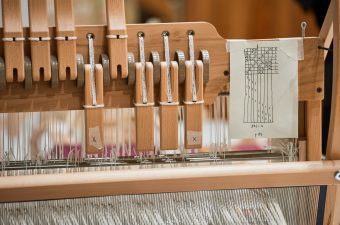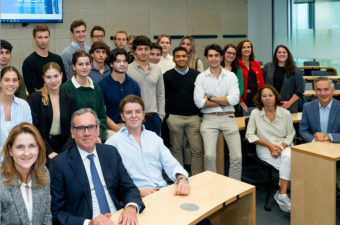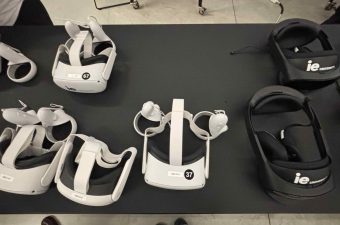Shaping Future Leaders in Sustainability
At IE University’s Segovia campus, Bachelor in Design students are gaining hands-on experience in sustainable design, moving beyond theory to solve real-world environmental challenges. This year’s collaboration with CM PLASTIK, a company transforming discarded fishing nets into eco-friendly, durable plastic sheets, offered students the chance to design functional products with tangible environmental impact.
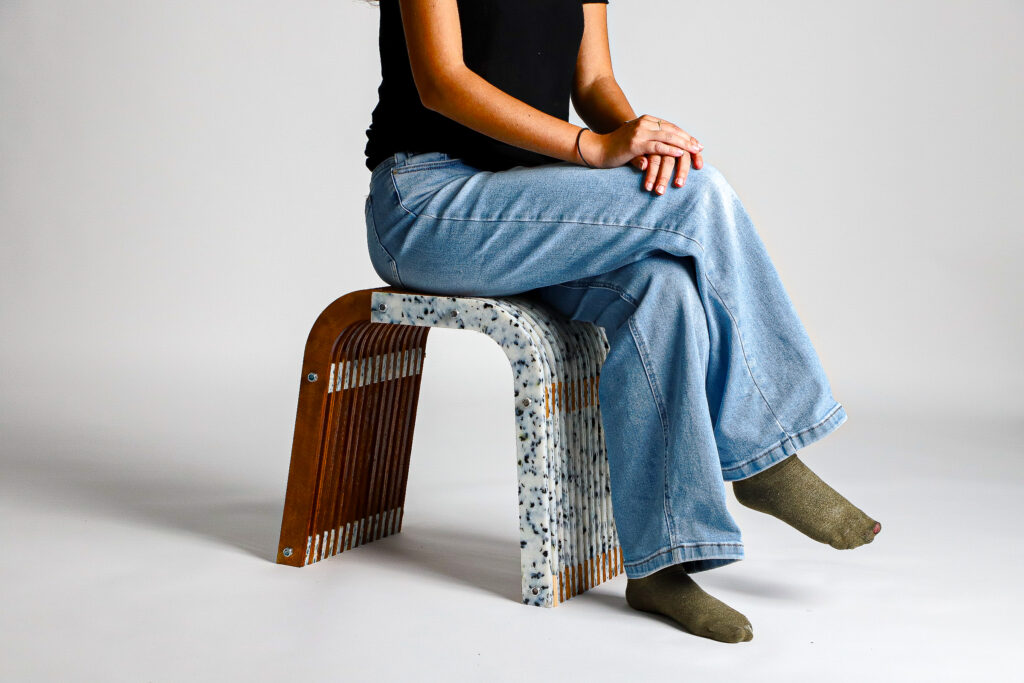
Why Recycled Materials Are Revolutionizing Design
Héctor Serrano, professor of Design Studio II, highlights the project’s learning focus:
“Sustainable design isn’t just theoretical—it’s about engaging with real materials and real constraints. CM Plastik’s recycled sheets let students see circular economy principles in action from day one.”
By integrating circular design and sustainability principles, students learn to account for material lifecycle, waste reduction, and environmental impact in every creative decision.
Turning Limitations into Opportunities
Students worked with limited quantities of recycled plastic sheets, challenging them to maximize creativity under strict constraints.
Unlike traditional plastics or wood, these sustainable materials behave differently, encouraging experimentation with techniques like kerfing, which adds flexibility without compromising strength.
A key requirement was that prototypes be easily dismantled at the end of their lifecycle, reinforcing circular design principles. By combining recycled plastic with biodegradable wood, students explored how eco-friendly materials interact and learned that thoughtful material choices can extend product longevity while reducing environmental impact. This approach also highlighted aesthetic, ergonomic, and structural challenges, emphasizing that sustainable design involves both form and function.
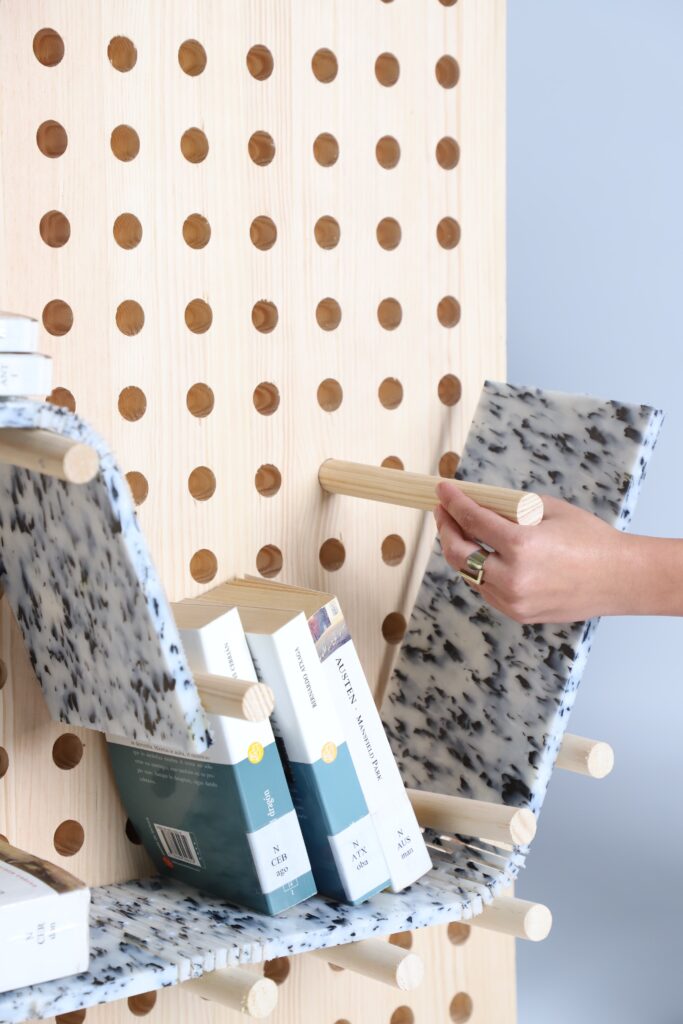
Real-World Industry Collaboration & Exposure
The partnership with CM Plastik included a detailed kickoff session where the company shared its mission, production process, and sustainability goals. Students also presented their projects at the Madrid Design Festival, gaining professional feedback and industry exposure.
“Collaborating with the next generation of designers has shown us just how powerful recycled materials can be in the right hands.” – Carlos Martínez, founder of CM PLASTIK
The final exhibition at IE University showcased prototypes ranging from sustainable furniture to everyday objects, all crafted from recycled fishing nets and biodegradable wood. A project catalog documented every stage, from ideation to final prototypes, serving as both a teaching tool and portfolio asset.
Student Project Spotlights
PegShelf
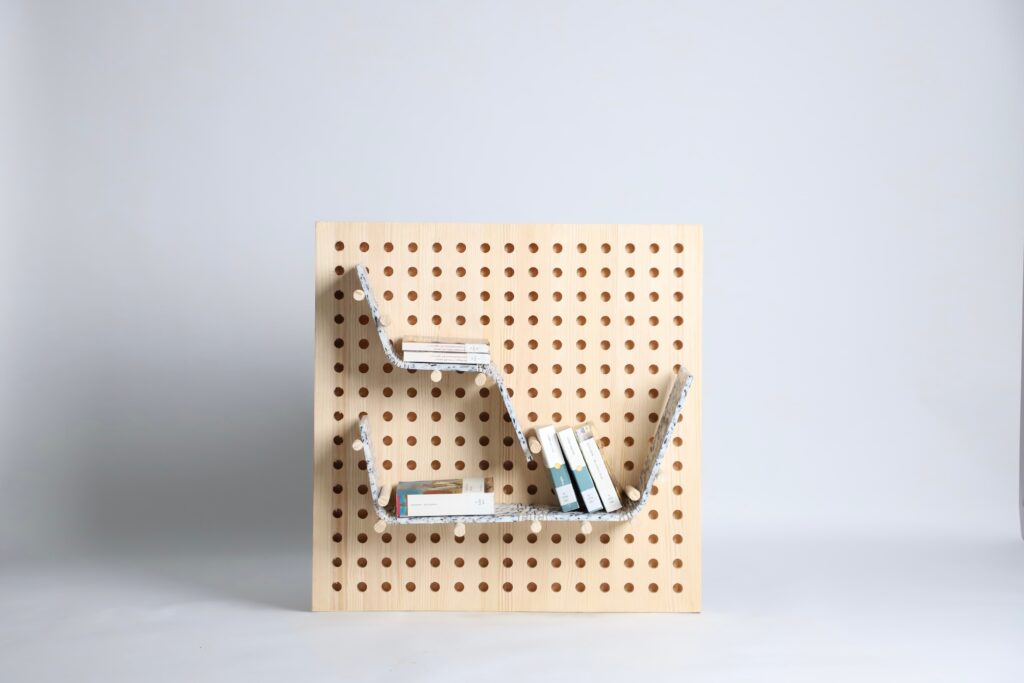
Lavinia Bernasconi, Laura Carrillo, & Kiara Finckenstein
An adjustable library that redefines functionality through sustainable design. Its modular shelves invite endless rearrangement, reducing waste and making each configuration unique.
Transformer

Pia Finkemeier, Leonie Mellac, & Lucia Romero
The Transformer blends recycled CM Plastik and plywood into a versatile piece that works as a chair, stool, or table—showing how sustainable materials can be both functional and sculptural.
Split U In Half
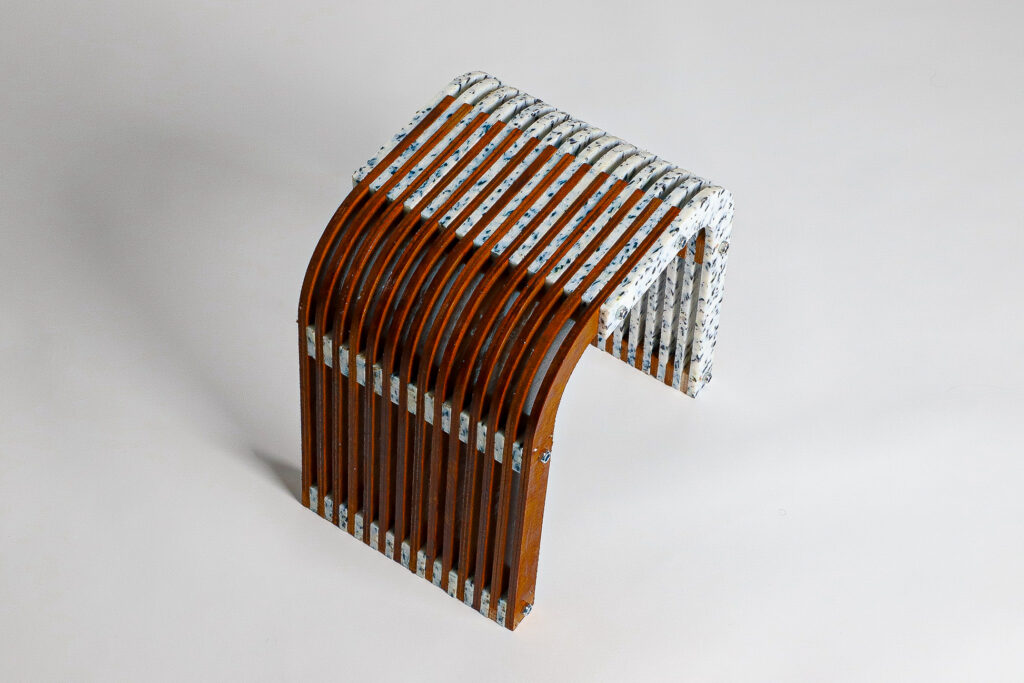
Zoe Boyd, Santi Jarquin, & Leo Tubman
This chair combines wood and recycled plastic, featuring 15 legs of each material for a total of 30. The slatted design of each leg adds both strength and visual interest, while six stainless steel rods hold the structure together for lasting stability.
Ori-Kotatsu
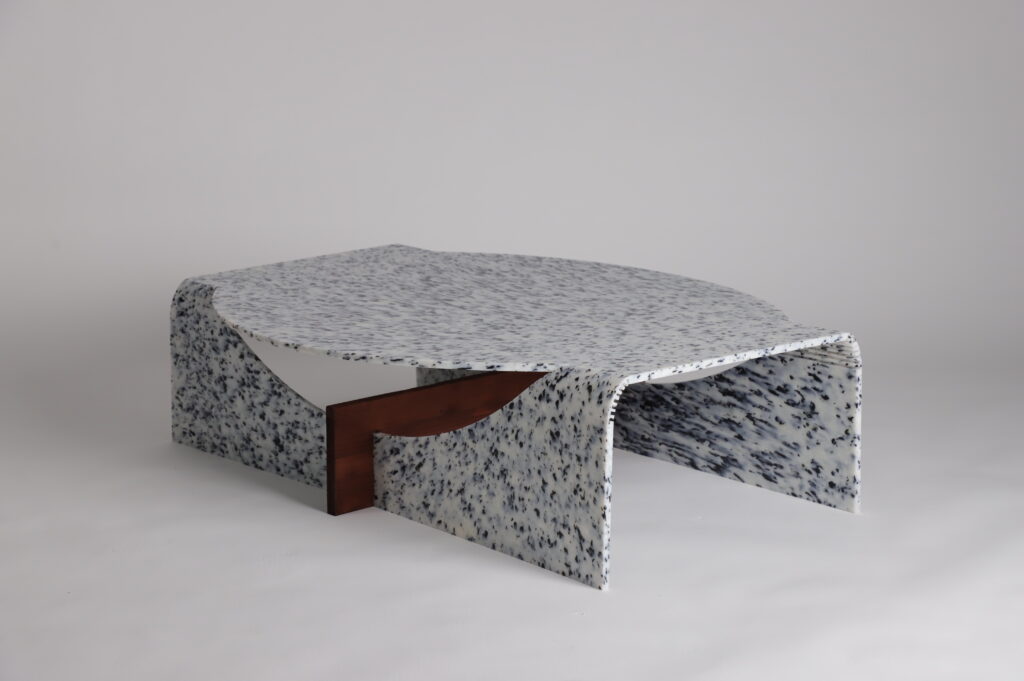
Borys Świerczyński & Aron Erdos
This low Japanese-style table combines CM plastic and warm wood, encouraging you to sit close to the floor and engage with others. More than just furniture, it invites gathering, sharing, and connection. Its simple, tactile design merges tradition with modernity in a quiet, welcoming way.
Sliding Light

Daniela Antimissaris, Carlota Castillo & Manuela Rodríguez
This sustainable lamp combines CM Plastik and wood. Its adjustable grid lets you shift the light’s intensity, creating a dynamic ambiance and demonstrating how movement can transform both light and perception.
The Hug
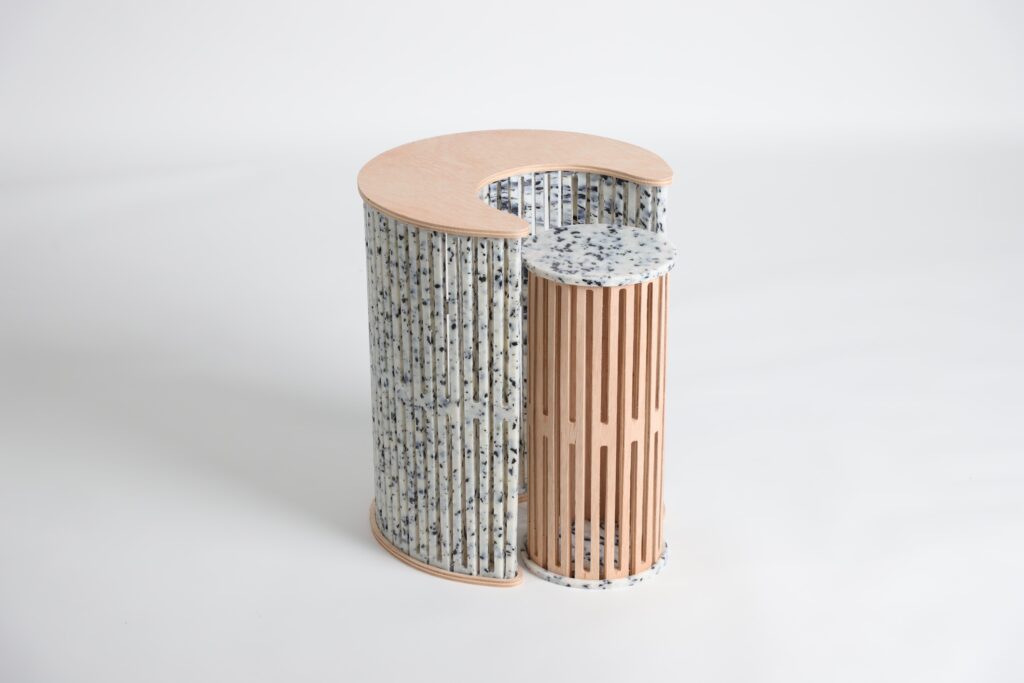
Fei Bushati, Roxanna Dehghani, & Angela Fakhry
CM Plastik and wood come together in this modular furniture piece, symbolizing harmony and connection. By balancing plastic’s modernity with wood’s warmth, it creates a unified form that is both visually striking and functionally complete, celebrating the fusion of contrasting materials..
Hole-y Table
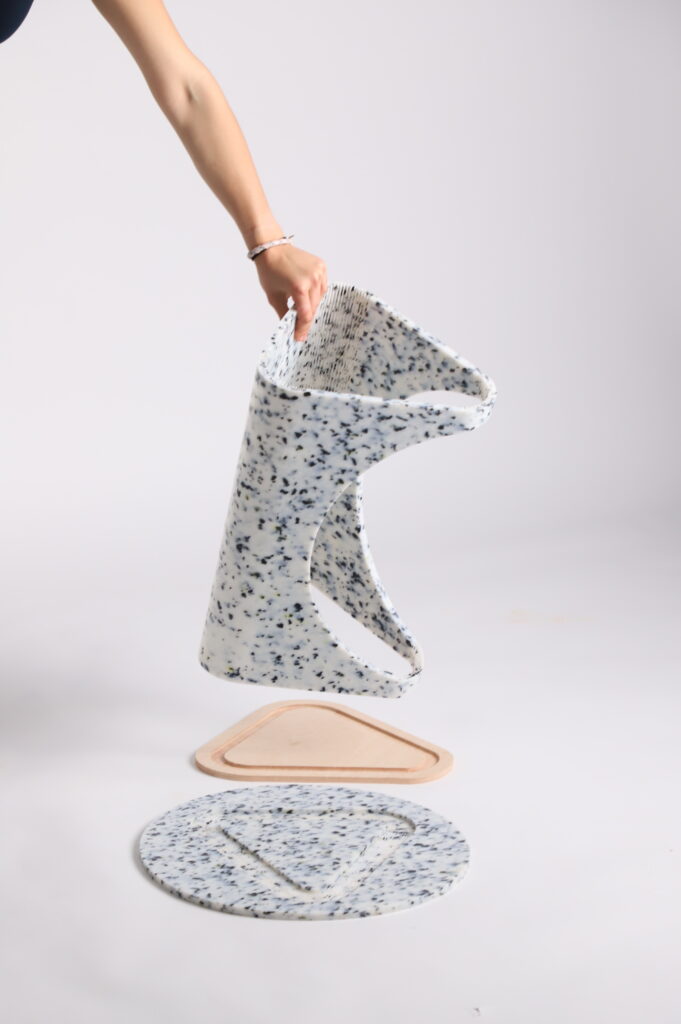
Sara Baos, Justine Daubert and Angela Martin-retortillo
This table features CM Plastik and crafted with minimal waste. Its single-plank tabletop includes a cut-out that transforms part of the structure into a functional shelf. Designed for efficiency, it blends sustainability with practicality, supported by a simple, sturdy wooden base.
The Infinity Winery

Marta Cuesta, Lucia Dao, & Lucia Gonzalez
The Infinity Winery transforms recycled plastic with elegant curves and a refined design. Using kerf bending, the material shifts from a flat, rigid sheet into a modular winery that can grow and be arranged endlessly without screws or glue. Its construction shows how innovation turns sustainable materials into both beautiful and practical products.
Key Takeaways
Students gained hands-on experience in:
- Transforming sustainable design ideas into viable, functional products
- Navigating real-world material and design constraints
- Prioritizing recyclability, durability, and ergonomics in product design
- Tackling industry challenges in sustainability and innovation
Héctor Serrano reflects:
“Students were amazed at what they accomplished—bringing recycled materials to life under constraints. This project exemplifies how IE University’s Bachelor in Design program prepares students to lead in sustainable innovation from day one.”

Become a Future Leader in Sustainable Design
The Bachelor in Design is a four-year program that blends creativity, technology, and innovation to help students make a real-world impact. From the start, you’ll learn by doing—working on hands-on studio projects, exploring digital fabrication, and collaborating with real companies to tackle design challenges. You’ll also discover how design can drive sustainability and positive change in the world. By combining creative thinking with business insight, you’ll graduate ready to lead the future of sustainable design and make your mark in global, design-driven industries.
Discover how IE University is shaping the future of sustainable design education with the Bachelor in Design program here.
